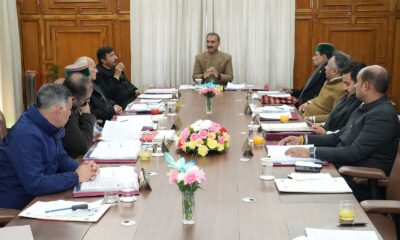News
Count for ‘Bird Flu Deaths’ in Himachal Crosses 31000, Poultry Farmers, Fishermen Face Huge Losses
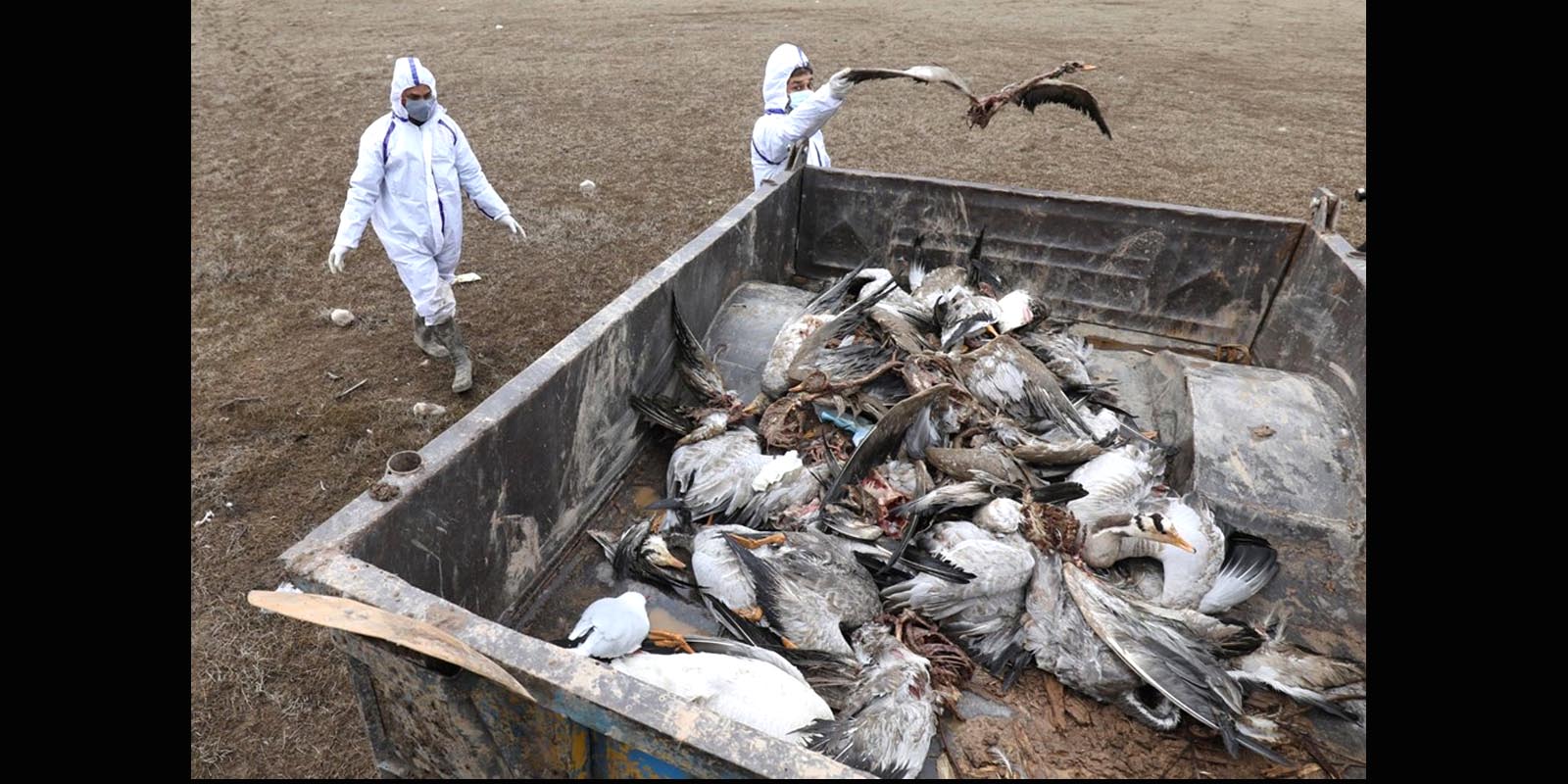
Shimla-Rising count of dead migratory birds in Himachal Pradesh due to an outbreak of “bird flu” is keeping the Horticulture and Wildlife Departments on their toes. The cause of deaths at the Pong Dam Sanctuary was H5N1 Avian Influenza virus, informed the Wildlife Wing of the State Forest Department on Wednesday. Samples of dead birds were sent to NIHASD Bhopal, it was informed.
The tally for Migratory bird deaths in Himachal Pradesh has crossed the 31,000 mark. Till January 5, this number was 2736 for the Pong Dam Wildlife Sanctuary alone. Some deaths of migratory birds have been reported from around Govind Sagar lake in Bilaspur district. About 90 percent of these deaths include Bar-Headed Gees, which migrate to Pong Dam wetlands from Siberia and Mongolia every year. These birds are known for their capability to sustain long flights at very high altitudes ranging from 5000 to 6000 meters above sea level, especially while crossing the Himalayan range. Other than that, some crows have also been found dead in some areas. But the reason of death was yet to be ascertained.
According to the Department, it was on 28 December 2020 that the field staff of Dhameta Range had first reported sudden deaths of four Bar-Headed Geese and one Common Teal in Fatehpur area.
The Wildlife Wing said that it was working actively to contain this outbreak of “bird-flu” and the field staff has been directed to maintain strict vigil and active surveillance on the situation.
“Rapid Response Teams have been constituted and deployed for collection and safe disposal of dead birds as per protocol. The infected areas are being disinfected and sanitized. The whole operation is being supervised by DFO Wildlife Hamirpur,”
informed a spokesperson of the Forest Department.
The outbreak of the flu in and around Pong Dam Sanctuary has promoted the government to ban fishing and livestock activity within an area of one kilometre from the lake’s periphery. An alert has been sounded within a radius of 10 km from the periphery of the lake. Also, commercial activity relating to poultry, birds, and fish has prohibited in Fatehpur, Dehra, Jawali and Indora subdivision of Kangra district.
The outbreak is haunting poultry farmers and those dealing in chicken and egg sales and export to markets. Poultry farmers fear that the outbreak would cause losses worth crores as the winter season is the peak season for their business. In case bird flu is reported in poultry farms, thousands of birds would have to be culled to prevent further spread, resulting in losses to these farmers. According to people involved in poultry and fishing, the demand has already fallen drastically after the news regarding the outbreak of the flu broke out.
The Animal Husbandry Department has sent 119 samples of poultry birds from areas around the Dam to the Regional Disease Diagnostic Laboratory in Jalandhar. The results of the tests were still awaited. Deputy Director, Animal Husbandry, Dr Sanjeev Dhiman informed that so far no case of bird flu has been reported among poultry birds.
So far, the Government of India has confirmed an outbreak of Avian Influenza in Rajasthan (Baran, Kota, Jhalawar), Madhya Pradesh (Mandsaur, Indor, Malwa), Kerala (Kottayam, Allapuzha), and Himachal Pradesh’s Kangra.
The measures suggested by the Union Government to the affected States to contain the disease and prevent further spread as per the Action Plan on Avian Influenza include strengthening the biosecurity of poultry farms, disinfection of affected areas, proper disposal of dead birds/carcasses, timely collection and submission of samples for confirmation and further surveillance, intensification of surveillance plan as well as the general guidelines for the prevention of disease spread from affected birds to poultry and human. Coordination with the forest department for reporting any unusual mortality of birds was also suggested to the States. The other states were also requested to keep a vigil on any unusual mortality amongst birds and to report immediately to take necessary measures.
Avian Influenza (AI) viruses have been circulating worldwide for centuries with four known major outbreaks recorded in the last century. India notified the first outbreak of avian influenza in 2006. Though the Government of India denies that the bird flu is only zoonotic, according the World Health Organization, there has been cases of infection in humans too.
According to WHO,
“As of 10 December 2020, a total of 1,568 laboratory confirmed human infections with avian influenza A(H7N9) virus have been reported to WHO since early
2013. Among them, 33 cases were infected with HPAI A(H7N9) virus, which have mutations in the hemagglutinin gene indicating a change to high pathogenicity in poultry. No increased transmissibility or virulence of the virus within human cases has been detected related to the HPAI A(H7N9) virus.”“Almost all cases of H5N1 infection in people have been associated with close contact with infected live or dead birds, or H5N1-contaminated environments. The virus does not infect humans easily, and spread from person to person appears to be unusual. There is no evidence that the disease can be spread to people through properly prepared and thoroughly cooked food,”
WHO adds.
According to Centre for Disease Control And Prevention,
“Rare human infections with some avian viruses have occurred most often after unprotected contact with infected birds or surfaces contaminated with avian influenza viruses. However, some infections have been identified where direct contact was not known to have occurred. Illness in people has ranged from mild to severe.”
The Centre also adds,
“Because of the possibility that avian influenza A viruses could change and gain the ability to spread easily between people, monitoring for human infection and person-to-person spread is extremely important for public health.”
Implementing management practices that incorporate bio security principles, personal hygiene, and cleaning and disinfection protocols, as well as cooking and processing standards, are effective means of controlling the spread of the AI viruses.
In India, the disease spreads mainly by migratory birds coming into India during winter months i.e. from September – October to February – March. The secondary spread by human handling (through fomites) cannot be ruled out.
News
HP Cabinet Decisions: Eligibility Criteria for BPL List, Special Task Force to Combat Drug Abuse & Other Decisions
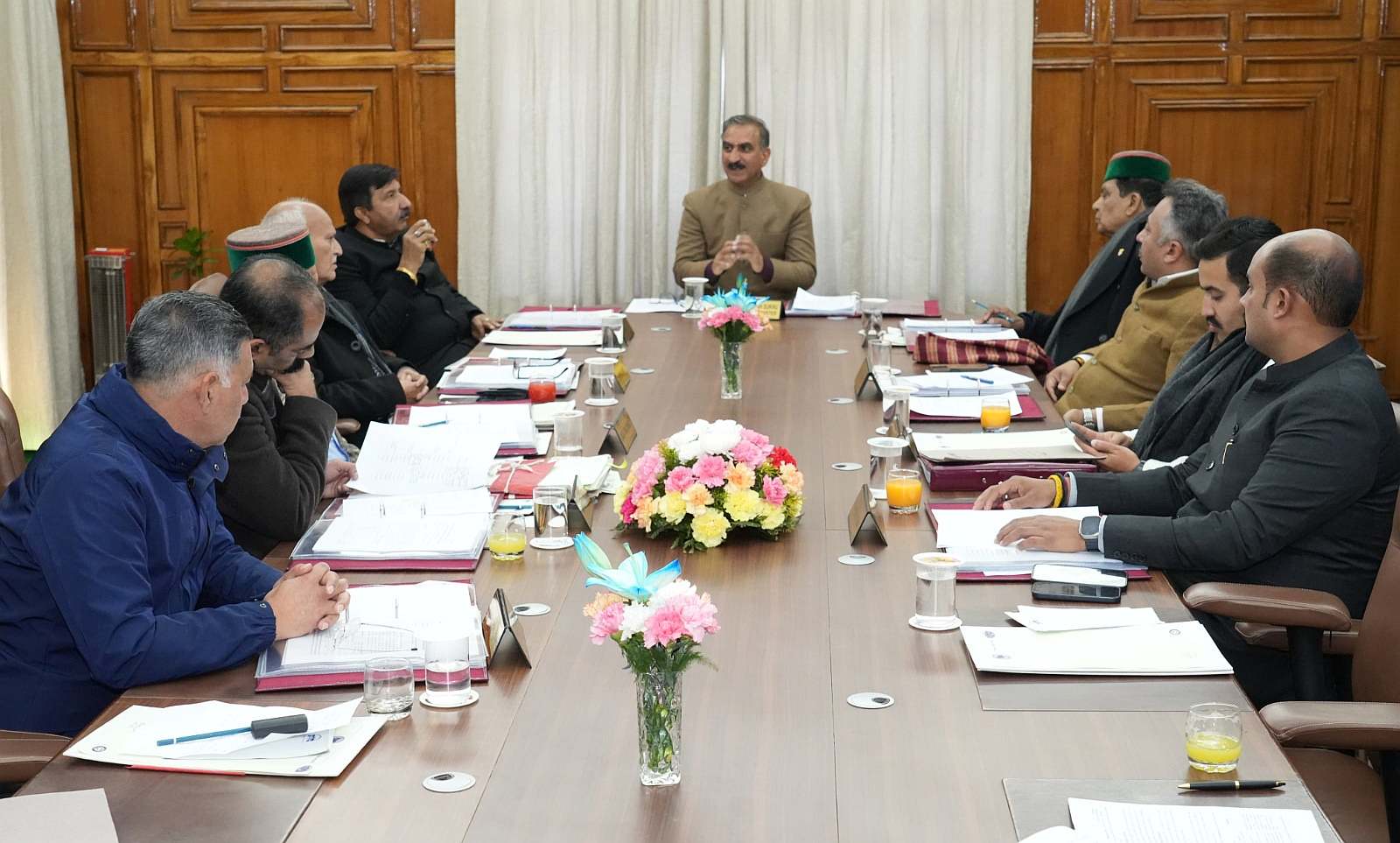
Shimla-The Himachal Pradesh Cabinet, in its meeting held on Thursday, approved the inclusion of the following families in the BPL list:
- Families with no adult members between the ages of 18 and 59.
- Women-headed families.
- Families whose head has a disability of 50 per cent or more.
- Families that worked for at least 100 days under MNREGA in the previous financial year.
- Families whose earning members are suffering from chronic diseases such as cancer, Alzheimer’s, Parkinson’s, muscular dystrophy, thalassemia, or any other condition resulting in permanent disability.
The Cabinet also approved the establishment of a Special Task Force to combat drug abuse and dismantle drug trafficking and organized crime networks in the state through a comprehensive and multi-faceted approach.
Additionally, the Cabinet decided to promulgate an ordinance to amend Schedule 1A of the Indian Stamp Act of 1899. This amendment will facilitate the levy of a uniform stamp duty rate of 12 per cent on transfer and lease transactions secured under Section 118(2)(H) of the Himachal Pradesh Tenancy and Land Reforms Act, 1972, with prior approval from the State Government.
The Cabinet approved a ban on the felling of trees, except for Safeda, Poplar, Bamboo, and Khair (for sale), in accordance with a ten-year program.
The Cabinet reiterated its request to the Government of India to adopt a 90:10 funding formula for the power component of the Kishau Multipurpose Project, similar to the formula adopted for its water component. Alternatively, the Cabinet proposed providing a 50-year interest-free loan for the entire amount payable by the State Government for the power component under the Inter-State Agreement.
It approved the establishment of a 1 MW Green Hydrogen Project in Nalagarh, to be executed by HPPCL.
The Cabinet sanctioned the imposition of Green Energy Development Charges for Pumped Storage Projects. A charge of ₹2.5 lakh per MW per year will be levied for the first 10 years after the project’s commissioning, increasing to ₹5 lakh per MW per year thereafter.
Approval was given to introduce the Himachal Pradesh Sadbhawana Legacy Cases Resolution Scheme 2025 to resolve pending cases, litigations, and arrears under subsumed enactments such as VAT, CST, Entry Tax, etc.
The Cabinet decided to designate the area surrounding the Tara Devi Temple in Shimla district as a Green Area.
It approved the creation and filling of 10 Junior Office Assistant (IT) posts for the Himachal Pradesh Public Service Commission, Shimla.
The Cabinet selected the Centre for Development of Advanced Computing (C-DAC), under the Ministry of Electronics and Information Technology, Government of India, to conduct computer-based tests for the recruitment of Group-C posts through the Himachal Pradesh Rajya Chayan Aayog, Hamirpur.
Approval was granted for creating the Block Primary Education Office at Rohnat by bifurcating the existing Block Primary Education Office at Shilai in the Sirmaur district.
The Cabinet decided to transfer three-gram panchayats — Matyal, Kudal, and Dhadol — from Development Block Lambagaon to Development Block Baijnath in Kangra district to serve the residents of these areas better.
The Cabinet approved the Baddi-Barotiwala-Nalagarh Development Authority Land Pooling Policy-2025.
It also approved the establishment of the Himachal Pradesh State Water Informatics Centre to collect data from domain-specific bodies, develop new databases, and disseminate comprehensive water-related information.
News
HP Govt Takes Action Against Striking Zila Parishad Employees, Orders Fresh Recruitment
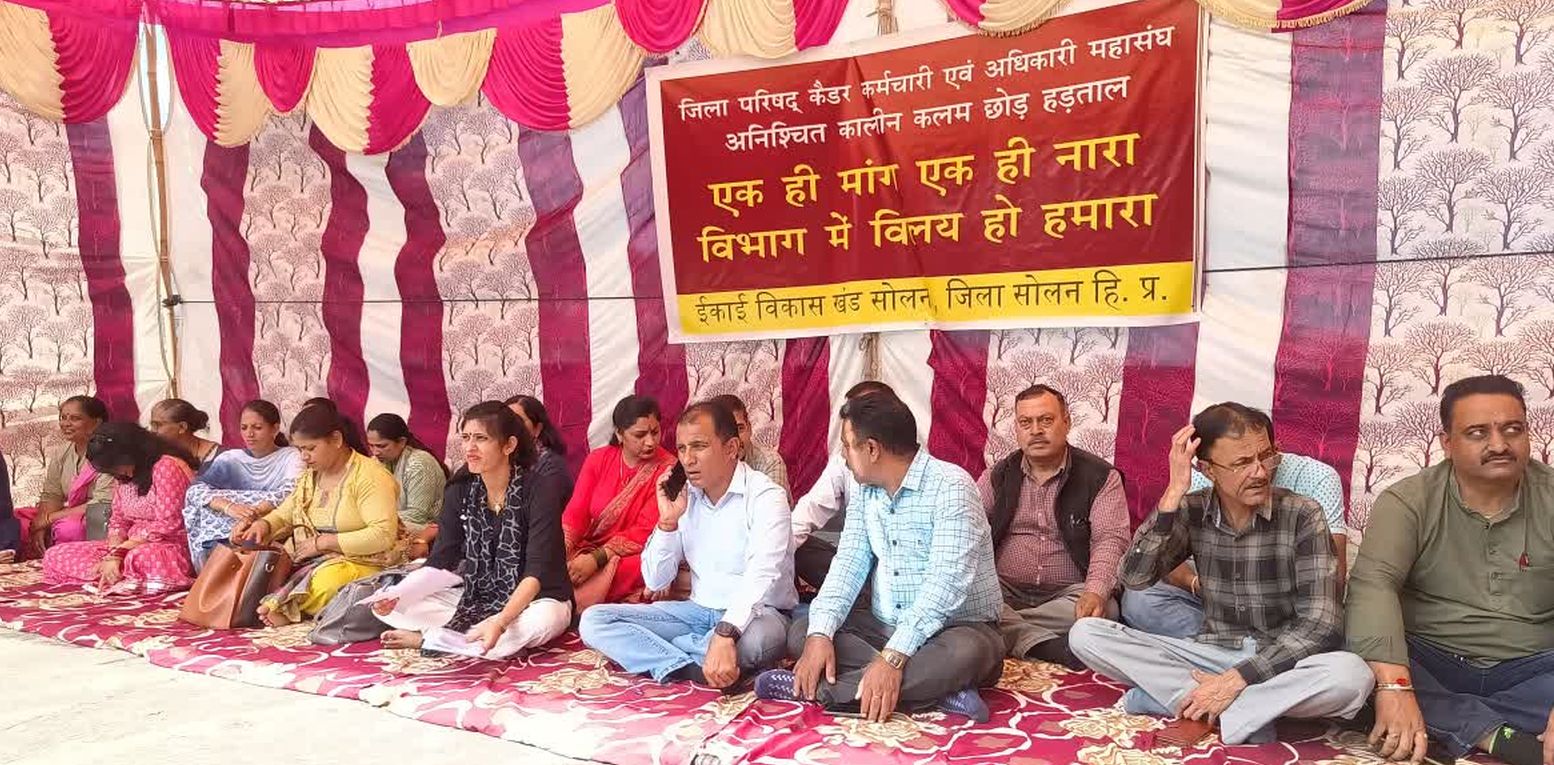
Shimla– Himachal Pradesh Government has initiated action against Zila Parishad cadre employees, who have been on strike since September 30 over their demands for a merger with the Panchayati Raj Department. To start with, the Govt has terminated the services of 167 Junior Engineers (JEs) and ordered fresh recruitment of Diploma or Degree holders in Civil Engineering.
According to the Director, Panchayati Raj Department, Rugved Milind Thakur, notifications have been issued to the Chief Executive Officers of Zila Parishad and the Deputy Commissioners regarding the same.
Earlier, Chief Minister Sukhvinder Singh Sukhu, in a statement to the media, had said that at a time when the State was hit by a natural disaster and is in the middle of carrying out relief work and rehabilitation of the affected people was not an appropriate time for such strike. He further added that the demands of these Zila Parishad employees would be attended to when conditions are suitable. He had added that the employees wouldn’t get anywhere by using pressure tactics against the State Government.
The Panchayati Raj and Rural Development Minister Anirudh Singh had maintained the same argument and urged the employees to end the strike and get back to work because their absence was obstructing relief work. Anirudh Singh argued that the HP Government was serious about the demands of the employees, but their merger will have to go through various stages in accordance with the rules and legal procedure. This process would take time, he said. However, the Minister also failed to convince the striking employees to get back to work.
A few days back, a spokesperson of the HP Panchayati Raj Department had issued a statement, which said,
“Absence of technical staff was causing delayed wage payment to the MGNREGS workers as well as hampering development works being undertaken for disaster relief and restoration. A special package has been announced by the state government for the disaster-affected families. Under this package, reconstruction of houses and cowsheds and other relief and rehabilitation works, conservation activities of agriculture and horticulture land, etc. were to be done. But these works are being affected due to the absence of technical staff.”
The Department had also sought details from all the Chief Executive Officers of the Zila Parishads regarding the absence of employees in view of the delay in developmental and disaster relief works by October 18, 2023. The government termed their absence as unauthorized.
The Department said that it was taking all necessary steps to deal with the situation arising due to the absence of certain categories of employees.
“There should not be any unnecessary delay in disaster relief and rehabilitation works and the Panchayati Raj Department was determined to ensure all assistance and other benefits to the affected families on time,” the Spokesperson said in a statement.
The Department had also handed over the charge of Panchayat Secretaries temporarily to Gram Rozgar Sevaks, Sewing Teachers, and Panchayat Chowkidars. They were also given financial powers. The Panchayati Raj Department justified that these alternative arrangements were helping to restore the issuance of certificates and other routine works of the Gram Panchayats.
However, the striking employees on Friday said the alternative arrangements weren’t working at all, thus, causing a huge inconvenience to the people. The employees said that the decision of the government to sack the JEs has not affected their strike, and it will go on indefinitely till their demand for merger is met.
Why Zila Parishad Employees Are on A Strike
4,700 Zila Parishad cadre employees have been on indefinite pen-down strike since September 30, stalling the routine functions of Zila Parishads. The main demand of the Zila Parishad cadre employees is the merger with the Panchayati Raj Department so that they could avail benefits on a par with the employees of the other government departments.
These employees also said that despite a poll promise before the elections to the State Assembly, the current Congress government was denying them the new pay scale.
These employees argued that they were suffering financial loss, and they were not receiving dearness allowance (DA) and arrears while other employees were getting these benefits.
The employees are also demanding regularization under the contract policy. The strike has also received support from Panchayat representatives.
News
HP Cabinet Decisions: Construction in Shimla’s Green Belt Areas Permitted, Special Relief Package Approved
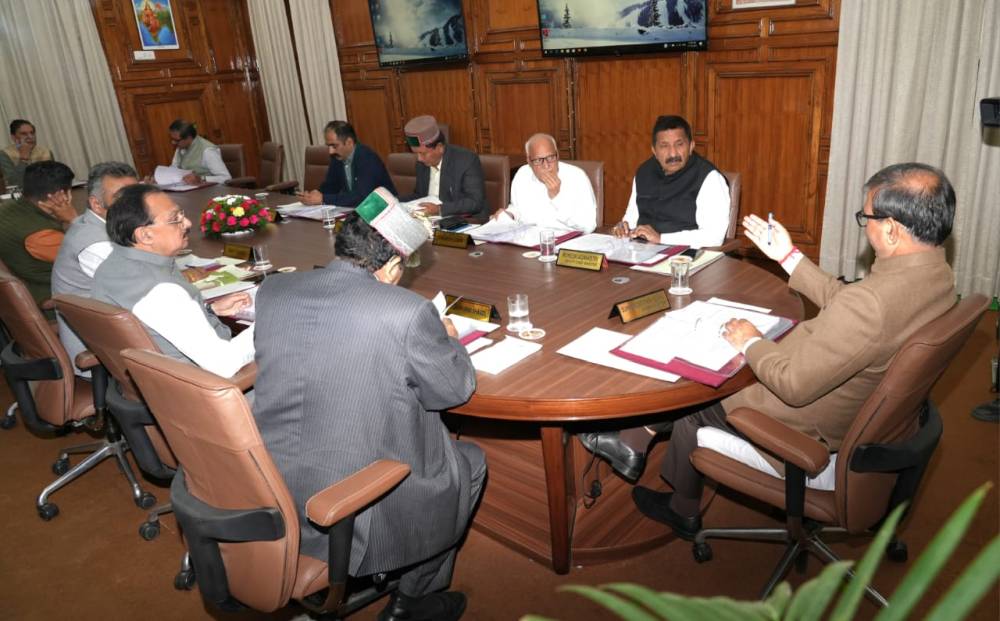
Shimla-Himachal Pradesh Cabinet on Wednesday held a meeting under the Chairmanship of Chief Minister Thakur Sukhvinder Singh Sukhu. Here are the decisions taken by the Cabinet:
Approval to Construction in Shimla’s Green Belt Areas
The Cabinet also decided to amend the Shimla Development Plan and construction would be permitted in green belt area lying above the road, from Navbahar to Ram Chandra Chowk to Machhiwali Kothi to Christ Church to Lakkar Bazar to IGMC to Sanjauli Chowk to Navbhar where there are no trees.
As per the Government, residential construction in the Green Belt area as per the Shimla Development Plan will be permitted only on those plots in which there are no trees.
It also decided to amend HP Town and Country Planning Rules to allow construction at a distance of 5 meters and 7 meters from Nallah and khad respectively.
The Cabinet decided to provide two Biswas of land in urban areas and three Biswas of land in rural areas who have been rendered homeless and those who are not left with land suitable for the construction of new houses.
HP Govt’s Special Package Approved
Nod was given a Special Relief Package for the disaster-affected families in the State as announced on 30th September 2023 by Chief Minister Sukhvinder Singh Sukhu.Under the Special Package:
-
- The compensation of Rs. 1.30 lakh for a completely damaged house would be increased five and a half times to Rs. 7 lakh.
- The compensation of Rs. 4,000 for partial damage to a ‘kutcha’ house would be increased by 25 times to Rs. 1 lakh, while the compensation for partial damage to a ‘pucca’ house to be increased by 15 and a half times, from Rs 6500 to Rs. 1 lakh.
- Compensation of Rs. 25,000 given in case of damage to a shop or dhaba would also be enhanced four times to rupees one lakh.
- The HP Government will also provide increased financial assistance of Rs. 50 thousand instead of Rs. 3000 for damage to the cowshed. T
- The state government will provide assistance of Rs. 50 thousand for damage or loss to the belongings of the tenants thereby marking a 20 times increase, from the existing Rs. 2500.
- For the loss of large milch and draught animals compensation of Rs. 55000 and for goat, pig, sheep and lamb Rs. 6000 per animal compensation would be provided.
- The compensation of Rs. 3615 per bigha for damage to agricultural and horticultural land would be increased to Rs. 10 thousand.
- The compensation on crop loss of Rs. 500 per bigha is to be increased eight times to Rs.4000.
- The financial assistance for removing silt from agricultural and horticultural land is to be enhanced from Rs. 1384.61 per bigha to Rs. 5000.
This special package would be granted from 24th June 2023 to 30th September 2023.
‘Van Mitra’ Scheme Approved
The Cabinet approved the Forest Department ‘Van Mitra’ Scheme. Under this scheme, one ‘Van Mitra’ each, in 2061 Forest Beats would be engaged. It also decided to fill up 100 vacant posts of Forest Guards in the Forest Department on a contractual basis.
It decided to enhance the honorarium of Jal Rakshaks, Multi-Purpose Workers, para fitters and para pump operators of Jal Shakti Vibhag by Rs. 500 per month raising it to Rs. 5000, Rs. 4400, Rs. 6000 and Rs. 6000 respectively.
Chintpurni Passenger Ropeway
The Cabinet approved in principle to establish a passenger ropeway system from Chintpurni Baba Mai Dass Bhawan Parking to Chintpurni Temple in PPP mode in district Una with a cost of Rs. 76.50 crore.
It also gave its approval to hire 15 e-taxis in the Transport Department.
It decided to promote Amateur and Community Radios for ‘Alternate Communication during emergencies in all districts of the State. This would provide effective information exchange between information sources, emergency managers and those impacted by disaster or emergent situations.
The Cabinet decided to reduce the Additional Goods Tax on lead by 25 paise per kg.
It also accorded approval to grant 234 routes for private operators and additional 100 routes for tempo travelers to provide better transport facilities to the people of the State.
It also gave its approval for declaring Traffic Inspectors, Motor Vehicles Inspectors, Senior Motor Vehicle Inspectors of the Transport department and Assistant Sub Inspector and Head Constable of the Police Department as designed authority to compound the offences under various Sections of the Motor Vehicle Act, 1988.

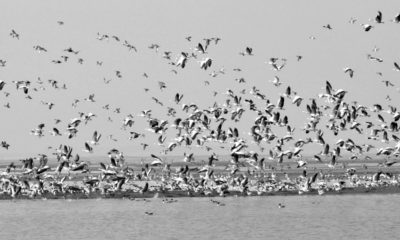

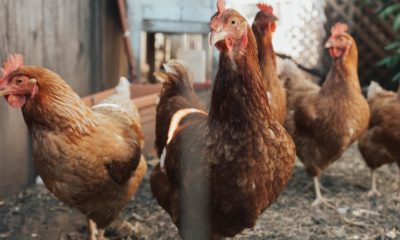

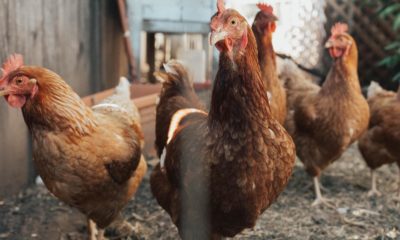







 Home Decor Ideas 2020
Home Decor Ideas 2020